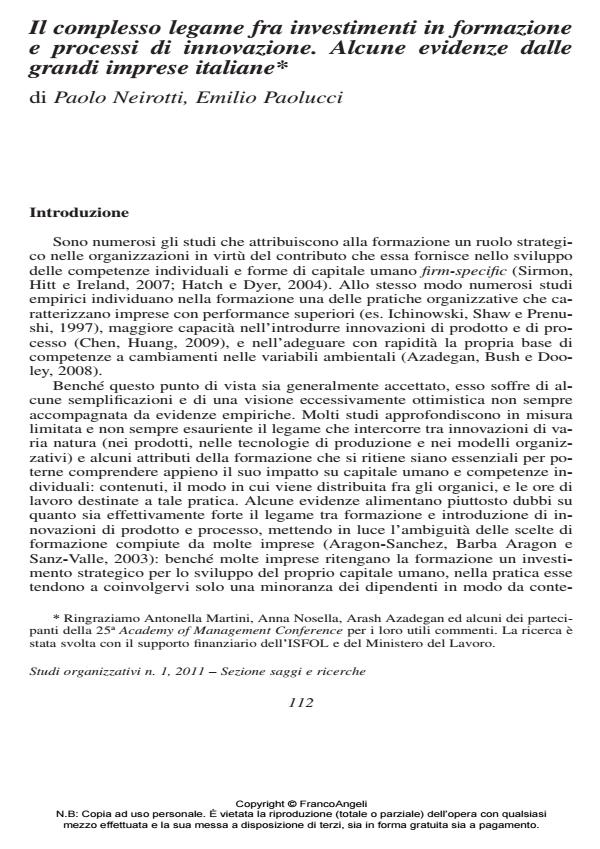How Firms Sustain Innovation Through Employee Training: Evidence from Italian Enterprises
Journal title STUDI ORGANIZZATIVI
Author/s Paolo Neirotti, Emilio Paolucci
Publishing Year 2011 Issue 2011/1
Language Italian Pages 32 P. 112-143 File size 697 KB
DOI 10.3280/SO2011-001005
DOI is like a bar code for intellectual property: to have more infomation
click here
Below, you can see the article first page
If you want to buy this article in PDF format, you can do it, following the instructions to buy download credits

FrancoAngeli is member of Publishers International Linking Association, Inc (PILA), a not-for-profit association which run the CrossRef service enabling links to and from online scholarly content.
Although organizational studies usually consider training a practice allowing firms to create new competencies, there is not a broad agreement on the idea that companies must involve the majority of their employees in continuous training for developing their human capital and innovation. The study here discusses these arguments using evidence from 304 large enterprises in Italy. Specifically, by using data on the firms’ organizational and technological innovations and training investments, the study shows that innovation positively affects the employees participation rate and the time intensity of their training programs. Furthermore, when training is combined with other practices firms show a higher propensity to innovate. Firms’ internal development of human capital does not affect, however, the average intensity of training programs, suggesting that only few employees are actively involved in organizational learning processes.
Keywords: Formazione, pratiche organizzative, innovazione, sviluppo di capitale umano
- La costruzione organizzativa della sicurezza: il ruolo della formazione Barbara Giullari, in SOCIOLOGIA DEL LAVORO 130/2013 pp.172
DOI: 10.3280/SL2013-130011
Paolo Neirotti, Emilio Paolucci, Il complesso legame fra investimenti in formazione e processi di innovazione. Alcune evidenze dalle grandi imprese italiane in "STUDI ORGANIZZATIVI " 1/2011, pp 112-143, DOI: 10.3280/SO2011-001005